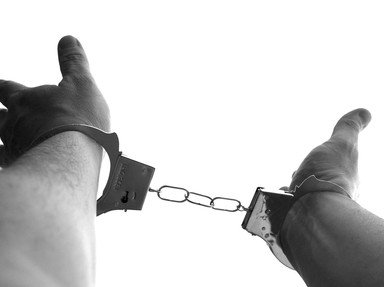Quiz Answer Key and Fun Facts
1. Most lawbreakers shun publicity, but not Billy The Kid. He was feted in newsprint and famed in the oral tradition of the West. He was reputed to have killed 21 men, but he met his match at the end of a six-gun. Who killed Billy The Kid?
2. Was there ever an outlaw tale more romanticised than that of Bonnie and Clyde? They robbed their way across the southwestern states of the USA, but where did they meet their end?
3. John Wesley Hardin was the real person who might well have been represented in all those cowboy movies as the baddest, meanest gunslinger of all. Whatever happened to him?
4. He believed himself to be a Robin Hood character and certainly Jesse James and his gang were ruthless robbers that stole up to $200,000 in their campaign. James met his match with a $10,000 bounty on his head. Who killed him?
5. No one quite knows for sure why Felipe Espinosa turned to a life of crime, but he was said to have killed 32 men in just a few months of 1863. Eventually he was killed by a skilled tracker. How did the tracker prove he had killed the outlaw?
6. She was born into a wealthy family, but pursued an outlaw life. Known as the 'Bandit Queen', Belle Starr met her end in unexplained circumstances, but which family member was suspected of being her killer?
7. "If you'll gather 'round me, children
A story I will tell
'Bout Pretty Boy Floyd, an outlaw,
Oklahoma knew him well...", sang Woody Guthrie of a gangster known as a modern-day Robin Hood. Whatever happened to him?
8. Many of the outlaw robbers of the 19th Century claimed to be Robin Hood characters, among them was Pancho Villa. Whatever happened to him?
9. From figurative poacher to gamekeeper, Henry Newton Brown had a remarkable slide back to poacher, or to be more precise, killer. Eventually this gunman-turned lawman was dragged from a prison and lynched. True or False?
10. Many of the outlaws of the Old West came originally from good families including Hoodoo Brown who engaged in murder, robbery, and theft - as well as being a man of the law. Whatever happened to him?
11. Their true story was probably less of a criminal enterprise than Hollywood later inferred, but Butch Cassidy and the Sundance Kid were no mean robbers. How - disputably - did they die?
12. Doc Holliday was one of the most notorious gunfighters of his time and the number of his victims is unknown. How did he die?
13. Famed in song as "A kinder-hearted fellow you seldom ever see" Sam Bass drifted into a life of robbing stage coaches. He was just 27 when he died following a gunfight with law officers. Who killed Sam Bass?
14. It was said that the first victims of Jim Miller were his grandparents, murdered when be was aged eight. By his own claim he killed 51 men. Whatever happened to him?
15. Known for never harming anyone and for leaving poems at the scenes of his many stagecoach robberies, whatever happened to Black Bart?
Source: Author
darksplash
This quiz was reviewed by FunTrivia editor
ponycargirl before going online.
Any errors found in FunTrivia content are routinely corrected through our feedback system.
